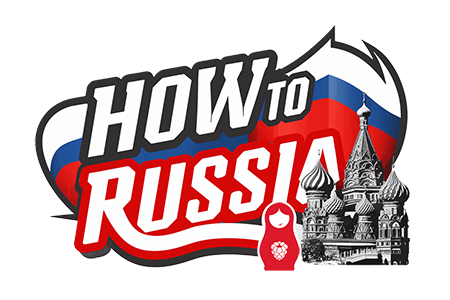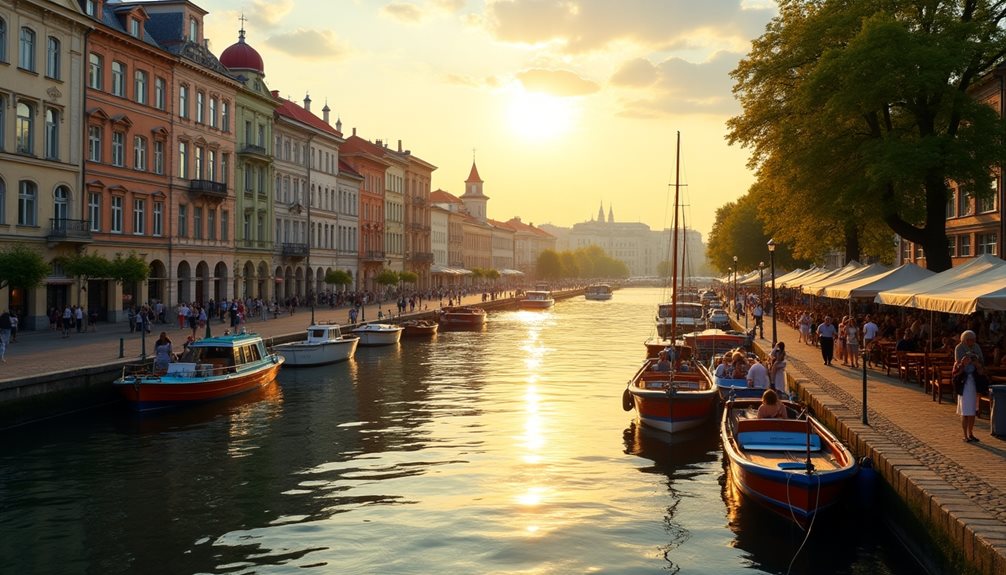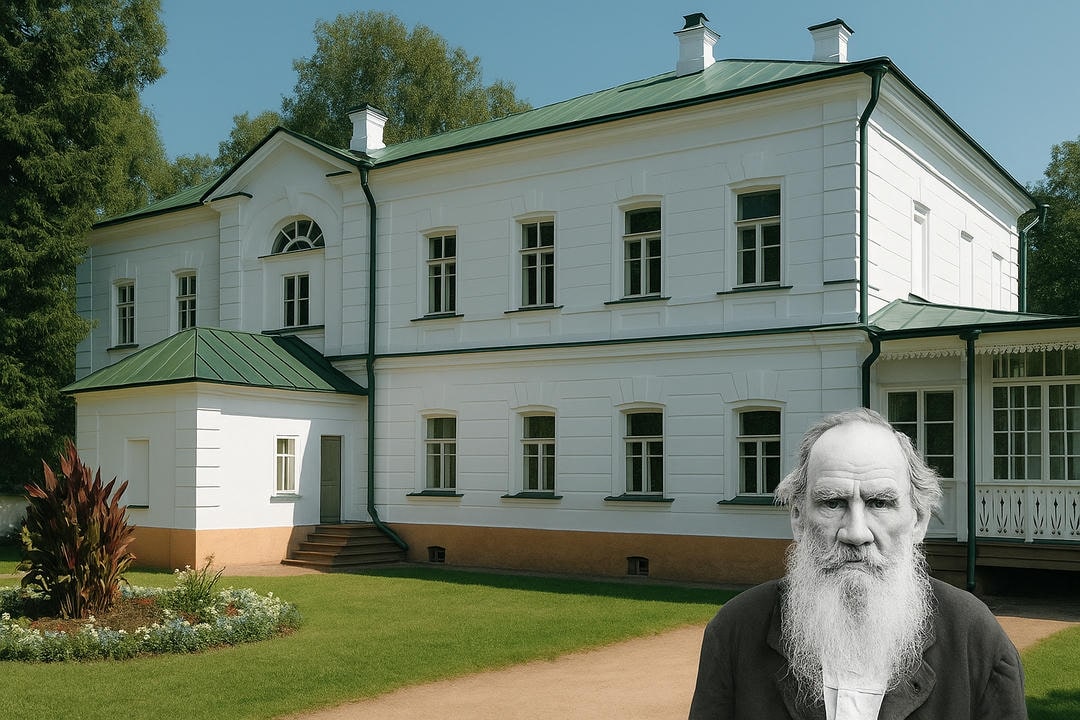The distinctions between Russian Orthodox and Catholic Christianity encompass a range of theological, governance, and liturgical aspects. Each tradition presents unique approaches to authority, sacramental understanding, and worship practices. While both branches share foundational beliefs in Christ, their diverging paths raise questions about their interpretations and expressions of faith. Exploring these differences reveals deeper insights into how each tradition shapes the spiritual lives of its adherents. What implications do these variations hold for contemporary believers?
Introduction
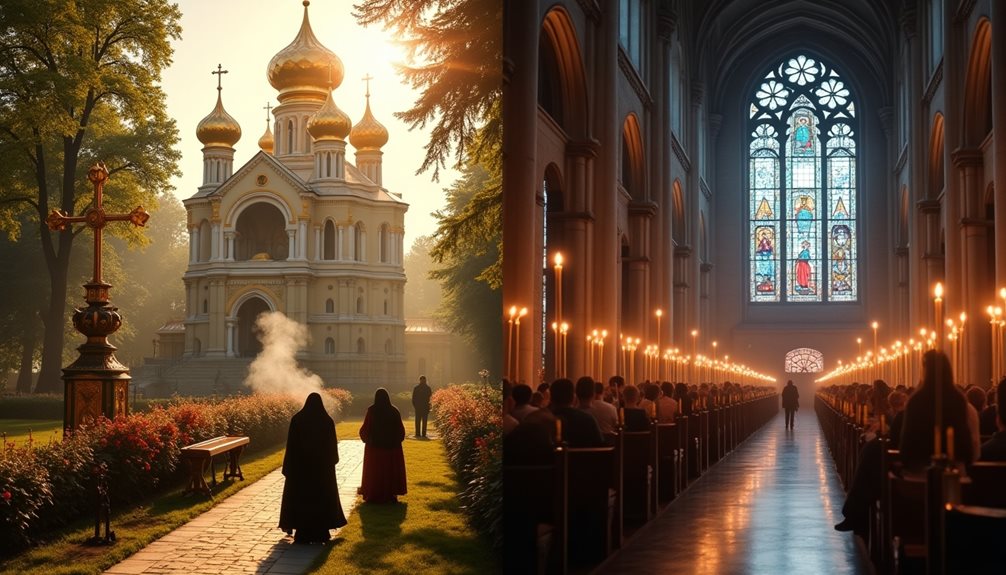
Christianity, as one of the major world religions, has historically divided into various traditions, notably Eastern Orthodoxy and Catholicism. Understanding the theological, practical, and governance differences between Russian Orthodoxy and Catholicism is essential for comprehending their distinct identities within the broader Christian landscape.
This exploration reveals not only the divergence in beliefs and rituals but also the cultural and historical contexts that shape each tradition.
Although Christianity originated as a unified faith, it eventually splintered into various branches, most prominently the Eastern Orthodox and Catholic traditions. This division arose from historical developments marked by theological debates and cultural influences, reflecting differing worldviews. Eastern traditions emphasize the continuity of apostolic succession and the sacraments, while Western traditions, particularly Catholicism, integrate philosophical reasoning and papal authority.
The Great Schism of 1054 epitomized these distinctions, solidifying divergent practices and beliefs. Each tradition has evolved uniquely, shaped by regional contexts and historical events, ultimately leading to a rich mosaic of Christian expression across the globe.
Understanding the differences in theology, practices, and governance between Russian Orthodoxy and Catholicism is essential for fostering meaningful dialogue and promoting interfaith relations. Theological nuances shape distinct beliefs, while varying governance structures influence decision-making processes within each tradition. Additionally, differing ritual practices reflect unique cultural significance, enriching the spiritual lives of adherents.
By acknowledging these differences, individuals can engage in ecumenical dialogue that respects each faith’s heritage and promotes mutual understanding. This comprehension not only enhances interreligious communication but also cultivates a respectful coexistence, allowing for deeper exploration of shared values amidst diverse religious landscapes.
East-West Schism of 1054
The historical background of Russian Orthodox and Catholic Christianity is anchored in the East-West Schism of 1054, which marked a significant theological and political divide between the Western Church centered in Rome and the Eastern Church based in Constantinople. This schism was influenced by the fragmentation of the Roman Empire, leading to distinct ecclesiastical authorities and practices.
Roots of the Schism
As tensions grew between the Eastern and Western branches of Christianity, the roots of the East-West Schism can be traced back to a complex interplay of theological, political, and cultural factors. Historical context reveals that differing interpretations of scripture and leadership authority fueled theological debates, spotlighting challenges to unity.
East-West relations deteriorated due to cultural impacts stemming from language barriers and divergent liturgical practices. These differences, compounded by political rivalry and the rise of distinct national identities, ultimately culminated in the formal split of 1054. This pivotal moment reshaped the landscape of religious practice across Europe.
Division of the Roman Empire
The split of the Roman Empire into Western and Eastern branches considerably influenced the trajectory of Christianity. This division created distinct paths for the Eastern Church, centered in Constantinople, and the Western Church, based in Rome. The historical context surrounding this bifurcation led to significant cultural influences that shaped theological perspectives, liturgical practices, and ecclesiastical authority.
Evolution of Theological Perspectives
As the two branches evolved, their religious divergence became pronounced. The Eastern Church emphasized mysticism and tradition, while the Western Church focused on doctrinal clarity and papal supremacy, ultimately laying the groundwork for future conflicts.
Byzantine Influence on Russian Orthodoxy
The adoption of Orthodoxy in Russia was heavily shaped by Byzantine influence. The historical context of the 10th century, marked by cultural exchange between Byzantium and Kievan Rus, facilitated the integration of Byzantine spiritual practices. This influence extended to religious art, characterized by the use of icons and elaborate church architecture, which became central to Russian Orthodoxy. The fusion of Byzantine traditions with local customs laid the foundation for a distinct religious identity, intertwining faith with national culture and impacting the development of Russian society.
Theological Differences
While both Russian Orthodox and Catholic Christianity share foundational beliefs in the divinity of Christ and the authority of Scripture, significant theological differences shape their distinct identities.
Sacramental Theology
Theological nuances emerge in sacramental theology, where the Orthodox emphasize the mystery of the sacraments, contrasting with the Catholic emphasis on their defined nature.
Ecclesial Authority
Ecclesial authority diverges, with Orthodox belief in conciliar governance versus papal supremacy in Catholicism.
Liturgical Variations
Liturgical variations reflect differing spiritual practices, such as the use of leavened versus unleavened bread in the Eucharist. These differences illustrate how each tradition approaches faith, worship, and community governance uniquely.
Papal Authority
Papal authority serves as a defining characteristic of Catholic Christianity, distinguishing it from the governance structures found in Russian Orthodox traditions. The papal infallibility debate underscores the unique hierarchical authority within Catholicism, where the Pope is viewed as the supreme spiritual leader. In contrast, Russian Orthodoxy emphasizes a conciliar model, reflecting regional governance variations. Historical papacy influence has shaped Catholic doctrine and practice, fostering a centralized authority that contrasts with the decentralized nature of Orthodox governance.
Holy Spirit Doctrine
The Holy Spirit Doctrine represents a fundamental theological divergence between Catholic and Russian Orthodox Christianity.
Catholic Teaching
Catholic teaching asserts that the Holy Spirit proceeds from both the Father and the Son, a position encapsulated in the term Filioque. Understanding this teaching reveals significant theological distinctions within Christianity. The Filioque controversy centers on the assertion that the Holy Spirit proceeds from both the Father and the Son, influencing concepts of the Trinity and unity within the Godhead. This historical context highlights a divergence from Eastern Orthodox beliefs, fostering ongoing ecumenical dialogue aimed at achieving doctrinal unity.
Orthodox Teaching
In contrast to the Catholic perspective, Orthodox Christianity asserts that the Holy Spirit proceeds solely from the Father. This distinction carries significant theological implications, shaping the essence of the Trinity and fostering ongoing doctrinal debates. The Orthodox position emphasizes the unique relationship between the Father and the Holy Spirit, which is seen as foundational to understanding divine nature. This divergence has implications for ecumenical dialogue, as it highlights the importance of addressing core theological differences. The spiritual significance of this belief underscores the Orthodox commitment to preserving apostolic tradition and maintaining a distinct identity within the broader Christian context.
Immaculate Conception
The doctrine of the Immaculate Conception represents a significant theological divergence between Catholic and Russian Orthodox Christianity.
Catholic Perspective
Catholics assert that the Virgin Mary was conceived without original sin, a tenet that underscores her purity and role in salvation history. Central to Catholic doctrine is the belief in the Immaculate Conception, which highlights Mary’s role as a pure vessel, essential for the Incarnation of Christ. This dogma affirms the necessity of a sinless intermediary between God and humanity, intensifying Catholic devotion to Mary and fostering deep reverence for her purity and grace. Consequently, the Immaculate Conception shapes the understanding of human nature, redemption, and the divine plan in Catholic theology.
Orthodox Perspective
Orthodox Christianity holds a distinct perspective regarding the Virgin Mary, affirming that she was born with original sin, similar to all humanity, yet lived a life of exceptional sanctity and devotion. This view contributes to the original sin debate, emphasizing the universality of sin while highlighting Mary’s sanctified life as an exemplar of faith. The theological implications of this belief contrast sharply with Catholic doctrine, which proclaims her immaculate conception.
Shared Tenets
Nonetheless, the significance of the virgin birth remains a shared tenet, inspiring diverse Marian devotion practices that celebrate her role as the Mother of God within both traditions, albeit through differing theological lenses.
Governance in Catholicism and Orthodoxy
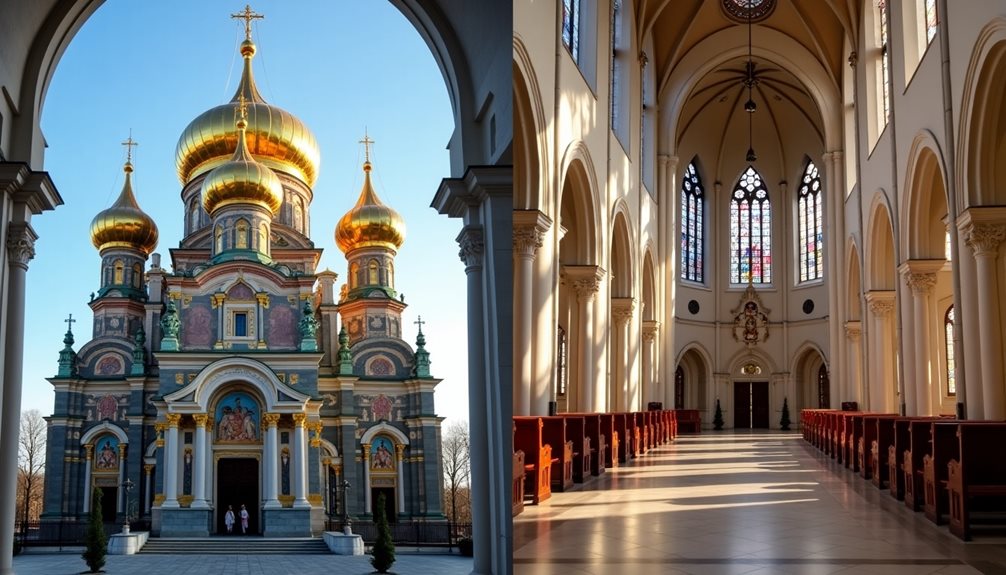
Centralized Hierarchy in Catholicism
The Roman Catholic Church operates under a centralized governance model, with the Pope at its apex. This structure ensures uniformity in doctrine and administration across its global hierarchy. The Pope, as the supreme leader, plays a pivotal role in guiding doctrinal interpretations, administrative decisions, and policy enforcement. Local bishops and parishes adhere to the Vatican’s directives, reinforcing a cohesive identity among Catholics worldwide. This centralized approach underscores the importance of papal authority in maintaining organizational unity and doctrinal consistency.
Decentralized Structure of Orthodoxy
In contrast, Russian Orthodox Christianity follows a decentralized model characterized by autocephalous (self-governing) churches. Each church operates independently under the leadership of its patriarch or metropolitan, reflecting a collegial governance style. This system allows for significant regional autonomy, enabling local customs and traditions to shape religious practices. The absence of a single central authority fosters diversity within the Orthodox tradition, emphasizing collective decision-making through synods. This adaptability has allowed Orthodoxy to accommodate cultural variations across its widespread communities.
Worship Practices
While both Russian Orthodox and Catholic Christianity share a common foundation in the teachings of Jesus Christ, their worship practices exhibit notable distinctions that reflect their theological and cultural differences.
Russian Orthodox services emphasize rich liturgical music, often featuring choral harmonies that enhance the solemnity of communal prayers. Fasting traditions are more rigorous, with strict observance of periods leading to major holy days. Additionally, worship attire in the Russian Orthodox Church tends to be more elaborate, promoting a sense of reverence.
In contrast, Catholic practices may incorporate a broader range of worship styles and liturgical flexibility, reflecting diverse cultural influences.
Church Interiors
The interiors of Russian Orthodox and Catholic churches reflect distinct theological and cultural priorities.
Orthodox churches are characterized by rich iconography and a design that often omits benches, encouraging a more communal and standing worship experience.
In contrast, Catholic churches typically feature simpler decorations and the inclusion of pews, emphasizing individual participation in liturgical practices.
Orthodox Church Iconography
Rich iconography serves as a defining feature of Orthodox church interiors, where the visual narrative of faith is intricately woven into the very fabric of worship. This iconographic significance reflects deep spiritual symbolism, inviting congregants to engage in a timeless dialogue with the divine.
Architectural choices, such as the absence of benches, further enhance the worship experience, emphasizing the communal nature of prayer and liturgical continuity. In this setting, worshippers stand, embodying a sense of reverence and active participation.
Such cultural expressions not only reinforce traditional values but also highlight the Orthodox commitment to maintaining a distinctive identity within the Christian faith.
Decor and Seating in Catholic Churches
Orthodox churches are characterized by their vibrant iconography and absence of pews, contrasting sharply with Catholic church interiors, which typically feature simpler decorations and the presence of pews.
This emphasis on liturgical simplicity creates a distinct worship environment, where the architectural differences contribute to a more subdued spiritual ambiance.
Catholic churches often prioritize functionality and accessibility, allowing congregants to engage in communal worship. The minimalist church aesthetics foster a focus on the liturgical experience rather than ornate visual distractions.
Consequently, these design choices reflect differing theological priorities, shaping how believers interact with the sacred space during their spiritual journeys.
Sign of the Cross
The Sign of the Cross is a profound ritual shared by Catholics and Orthodox Christians, yet it reveals distinct theological and cultural differences between the two traditions. This symbolic gesture serves as an expression of faith, connecting believers to their spiritual heritage and emphasizing key aspects of their respective doctrines.
Catholic Practice: Left to Right
In Catholicism, the Sign of the Cross is performed by touching the forehead, chest, left shoulder, and then the right shoulder. This motion symbolizes Christ’s sacrifice, with five fingers representing His wounds. The gesture is deeply rooted in Catholic theology, serving as a reminder of redemption and unifying believers in their faith. It is used in personal prayers, sacraments, and blessings, reinforcing its role as a sacramental sign that prepares individuals to receive divine grace.
Orthodox Practice: Right to Left
Orthodox Christians make the Sign of the Cross by touching the forehead, belly, right shoulder, and then the left shoulder. This movement reflects theological symbolism, with three fingers representing the Holy Trinity—Father, Son, and Holy Spirit—and two fingers pressed against the palm to signify Christ’s dual nature as divine and human. The right-to-left motion emphasizes the honor associated with the right side in biblical tradition. This ritual is integral to Orthodox worship and daily life, symbolizing unity with God and adherence to ancient practices.
Symbolism and Cultural Distinctions
The differing motions highlight distinct theological emphases: Catholics focus on Christ’s wounds and sacrifice, while Orthodox Christians emphasize Trinitarian unity and divine justice. These variations also reflect broader cultural expressions within each tradition. For Catholics, the gesture fosters a universal identity through uniformity; for Orthodox Christians, it underscores regional autonomy and preservation of ancient rites.
The Sign of the Cross stands as a powerful symbol of faith for both Catholics and Orthodox Christians. Despite its differences in execution and emphasis, it remains a shared expression of devotion that connects believers to their spiritual roots while highlighting the richness of Christian diversity.
Sacraments and Councils

Orthodox Adherence to Seven Councils
The Orthodox Church recognizes the authority of the first seven Ecumenical Councils, reflecting a strong commitment to preserving the foundational theological principles established in the early Church. These councils, convened between the 4th and 8th centuries, addressed pivotal issues such as Christology and the nature of the Trinity, which remain central to Orthodox doctrine. By adhering strictly to these decisions, Orthodoxy emphasizes continuity and tradition, fostering unity among believers while safeguarding its theological integrity in a changing world.
Catholic Acceptance of 21 Councils
In contrast, Catholicism acknowledges a broader canon of 21 Ecumenical Councils, illustrating its dynamic approach to doctrinal development and governance. These councils span centuries, addressing diverse theological disputes and adapting to societal changes. This expansive framework underscores Catholicism’s belief in an evolving yet consistent theological foundation. By embracing additional councils, the Catholic Church highlights its commitment to ongoing dialogue, ecclesiastical authority, and unity among Christian denominations.
Cultural and Regional Contexts
Orthodox Christianity and Ethnic Diversity
Orthodox Christianity is deeply intertwined with ethnic diversity, as seen in national churches like Russian, Greek, and Romanian Orthodoxy. These communities celebrate their faith through unique liturgical practices, customs, and traditions, fostering a strong sense of belonging and identity. This connection to regional culture also strengthens national identity in Orthodox-majority countries, where being Orthodox is often integral to national heritage. The preservation of ancient rites and traditions reinforces Orthodoxy’s role as a guardian of cultural heritage, enriching its global presence while maintaining local authenticity.
Catholicism’s Uniformity in Doctrine
Catholicism, while globally widespread, emphasizes doctrinal consistency across diverse cultures. Through missionary efforts and outreach, the Church maintains core teachings while adapting to local contexts to resonate with various communities. However, this approach often prioritizes universal unity over the preservation of regional distinctiveness, resulting in a less pronounced cultural interplay compared to Orthodoxy. While Catholicism’s global reach is expansive, its emphasis on uniformity can limit the depth of cultural integration seen in Orthodox Christianity.
In conclusion, the shared faith in Jesus Christ serves as a powerful unifying force across different Christian traditions. This common foundation fosters a sense of spiritual unity, encouraging mutual respect and dialogue among diverse communities. By embracing their shared values such as love, compassion, and charity, these traditions can build bridges of understanding, leading to collaborative efforts that enrich their spiritual lives and contribute to a more harmonious global community. Ultimately, this mutual appreciation allows faith to flourish, promoting a deeper connection among believers and enhancing the broader cultural landscape.
